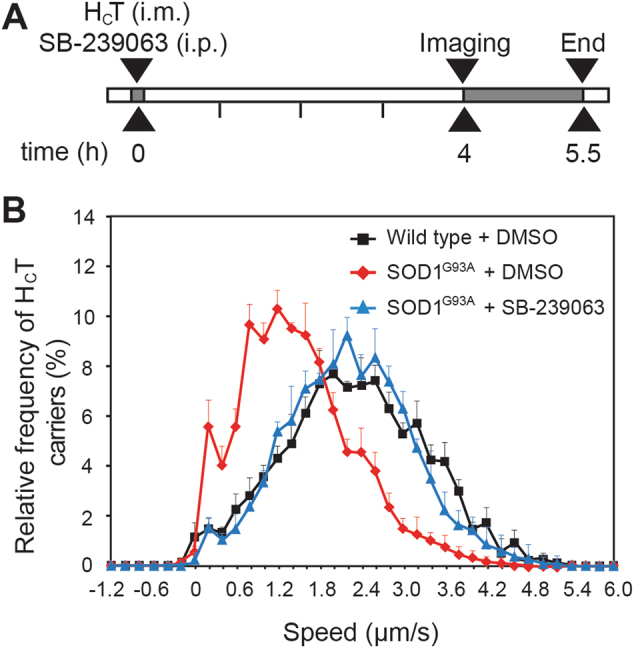Fig. 6. Inhibition of p38 MAPK correct axonal transport defects in vivo in SOD1G93A mice.

a Mice were anesthetised and AlexaFluor 555-conjugated HCT was injected intramuscularly (i.m.) into the tibialis anterior (TA) and gastrocnemius muscles (GC). At the same time, 100 mg/kg SB-239063 or vehicle control was administered via intraperitoneal injection (i.p.). The animals were allowed to recover for 4 h, then re-anesthetised and axonal transport imaged in the exposed sciatic nerve. b Axonal retrograde transport in single axons of the sciatic nerve was assessed in 73 d wild type (black triangles), SOD1G93A (red diamonds) and SOD1G93A mice treated with 100 mg/kg SB-239063 (blue triangles). SOD1G93A mice displayed a significant impairment in axonal retrograde transport (p < 0.0001; Kruskal–Wallis test, followed by Dunn’s multiple comparison test) compared to wild type, whilst SOD1G93A mice treated with SB-239063 showed transport speeds similar to those of wild-type mice (p = 0.5) (wild type: 161 carriers, n (animals) = 4; SOD1G93A: 185 carriers, n = 5; SOD1G93A + 100 mg/kg SB-239063: 238 carriers, n = 4; data shown as mean ± SEM). Treatment of SOD1G93A mice with vehicle was found to have no effect on in vivo axonal transport speeds
